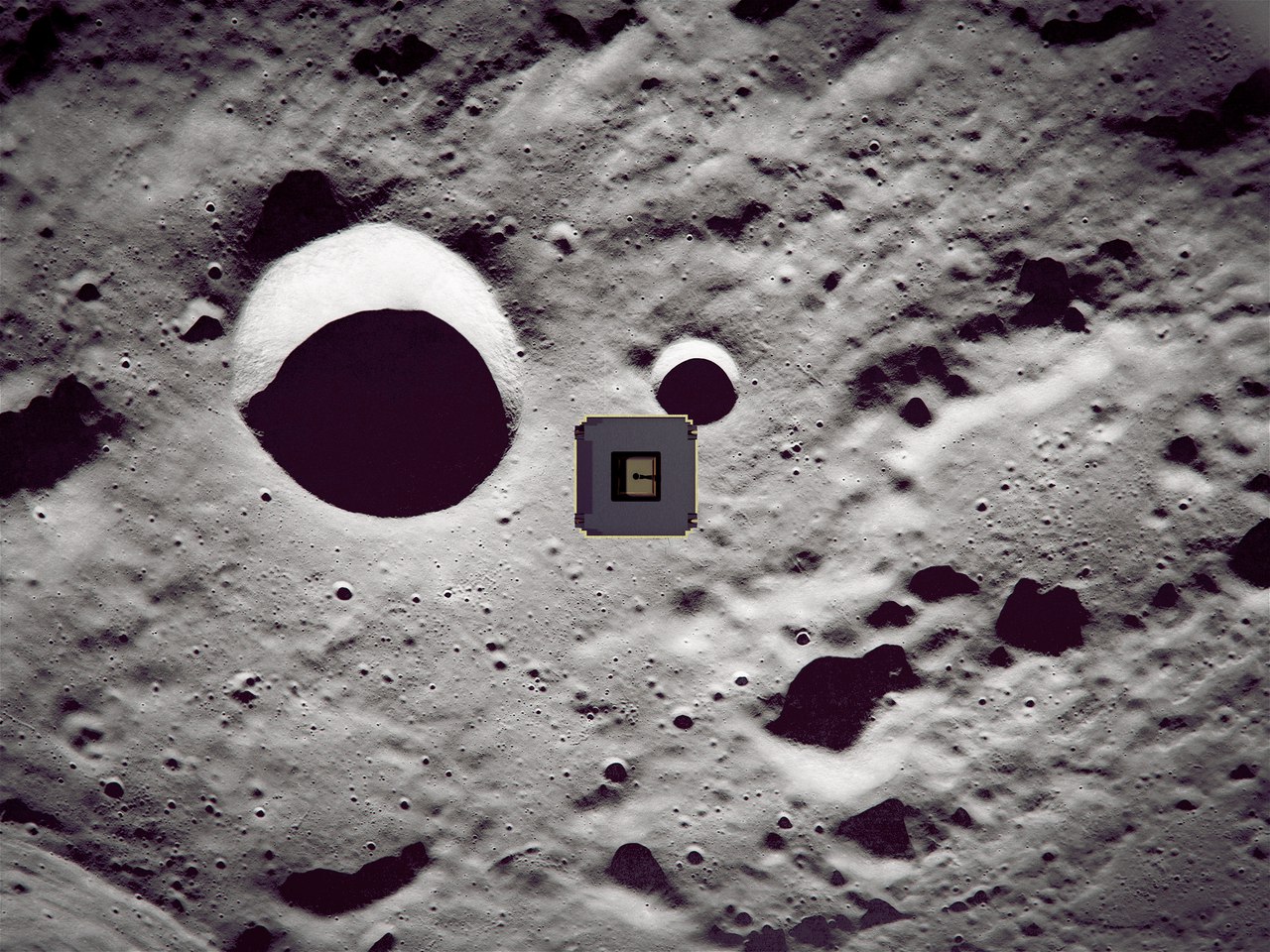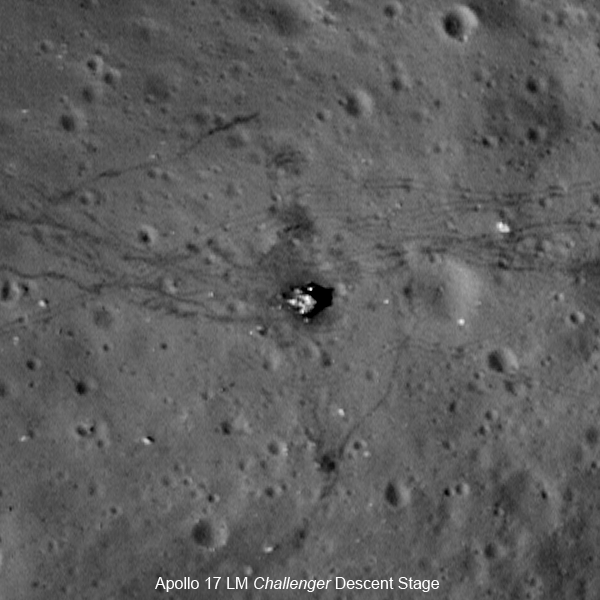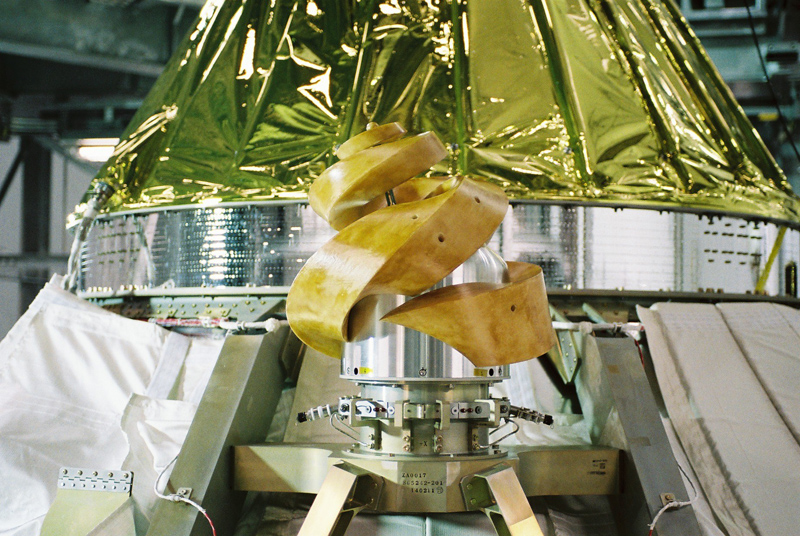Lunar Microsatellite Project: Questions and Answers

On October 1, 2015, on the crowdfunding platform Boomstarter, a fundraiser was opened to work out a spacecraft project for launching into circumlunar orbit and shooting Apollo and Lunokhod landing sites. The project was started by enthusiasts, so he raised a number of questions, and I will try to answer some of them.
Who are you anyway?
Details about the team that began work on the project, written on the description page . Part of the team consists of specialists from the Russian private space company Dauria Aerospace , part of which are engineers who have not previously engaged in space projects, but have decided to start doing this. Now we are written by many experts from various fields, including space, offering their participation and assistance in the project, so the number of developers will grow. Now the staff of the Institute of Applied Mathematics named after M.V. Keldysh, NGOs them. S.A. Lavochkin, MSU, SSAU, private companies “Sputniks” and “OKB of the Fifth Generation”, students of MSTU. M.E. Bauman, MAI.
')
On November 4, 2015, we held an open meeting in the conference hall of the Moscow Museum of Cosmonautics, where everyone could communicate with the project participants, and personally ask questions. We will try to repeat such meetings about once every three months.
Where is the guarantee that the money allocated by the sponsors will go to the stated goals?
I am the author and initiator of the project - Vitaly Egorov , writing blogs under the nickname Zelenyikot . I write about the cosmos and during my time of popularization I was able to become familiar to many people interested in this topic. During my work, I managed to gather large communities of space enthusiasts in the social network Vkontakte ( Curiosity-rover , Open space , Satellite Electro-L ), to organize the search for Mars-3 ; to organize a public campaign with a request to the leadership of Roskosmos to change the operation mode of the “Electro-L” satellite to capture an interesting astronomical phenomenon and make the data from the satellite more open ; create a blog and website that have become worthy of the Belyaev Prize for the popularization of astronautics. Now I occasionally give lectures on the subject of space exploration, including in the Moscow Planetarium and the Moscow Museum of Cosmonautics.
Opening the project of the lunar microsatellite, I actually vouch for everything that was created and achieved by me and my associates in the promotion of astronautics. For the time being, only my honor and authority can serve as a guarantee for the fulfillment of promises. Of course, they are far from important for everyone, but this is all that I have, and for me they very much mean a lot.
Do you yourself believe that the Americans landed on the moon?
Personally, I am sure that they were there. I believe the Soviet space industry specialists, who do not doubt the accuracy of the landing. I believe the Soviet and Russian scientists who studied and compared the lunar soil, delivered by various missions. I believe my experience in space archeology and the analysis of satellite imagery and surface imaging. Everything speaks in favor of the fact that they were there and there is not a single convincing argument against it.
Other members of our team are not so categorical in their judgments. But everyone agrees that the flight of our satellite, and a successful survey will provide convincing and reliable facts that will remove all doubts.
If representatives of the Russian space industry do not doubt the authenticity of NASA flights, do you not question their authority with your project?
The goals of the project are much broader than just finding out whether they were flying or not, therefore, those representatives of the industry who understood our idea do not feel any encroachment on their authority. On the other hand, not all representatives of the industry are 100% sure of the landing of the Americans. I personally heard from the mouth of the RSC Energia employee public statements about the falsification of the lunar soil. Other representatives of the Russian cosmonautics are not so categorical in their statements, but they acknowledge that there are doubts and independent observations would not be superfluous.
Do you understand that you still can’t convince the most categorical “non-traffickers”?
We understand. Our project is designed primarily for those interested in space, and the goals chosen are those that will provide objective and independent data on the surface of the moon, and will be the final answer for those who do not know which of the contending parties to join.
But the goals of the entire mission are much greater. Here and the promotion of astronautics, and the inspiration of the younger generation with an interesting and ambitious program, and the creation of a microsatellite platform, on the basis of which, in the future, it will be possible to carry out other research in interplanetary space ...
The American LRO satellite has already taken pictures of the landing sites, what new results will your shooting have?
We set the task to survey the surface of the moon at a resolution of about two times higher than the shot LRO. Even if it is not possible to shoot better, shooting a similar LRO frame will still be a project’s success, and will give an independent look at the surface of the Moon.

Among other things, Russia does not have its own satellite images of the Moon. There are only those that were inherited from the Soviet Union and the programs “Luna” and “Zond”. If our project is successful, it will provide additional material about the moon for our scientists.
Europeans, Japanese, Indians and Chinese also filmed Apollo, what is the difference between your idea?
The satellites of other space agencies did not survey the Apollo, but only the Apollo landing sites. The resolution of satellites, except for LRO, did not allow the descending steps of the spacecraft to be considered. The Indian satellite Chandrayaan-1 was able to see only the “halo” - a spot of dust, which the rocket engines of the descent vehicle accelerated. The Japanese Kaguya was able to get a picture that shows a halo , and you can dimly see the descent stage Apollo-15 as a bright point, and its shadow as a dark point. The Europeans set the goal of shooting the landing sites of manned ships, but the resolution of their camera did not allow obtaining the required quality of images.
What will be done on the collected 1.5 million rubles?
If we speak in the terminology adopted in the Russian space industry, then we collect money for the advance project . But we tried to avoid the use of this term, so as not to be limited to the requirements that are imposed on this stage of development. In simple terms: we create a technical description of the spacecraft and its flight program, which will show the actual feasibility of such a mission. Those. we must work out such a spacecraft that will be able to accomplish the goals that we set.
In addition to the direct objectives of shooting the moon in high resolution, our satellite must still weigh little and cost a little, which imposes serious restrictions on the entire structure.
How much will the entire flight program cost?
A more accurate cost of the entire program will be known when we prepare the project itself. We hope that we can manage to keep within $ 10 million, but this is more hope than an objective assessment of the mission.
Where do you get the rest?
The implementation of the entire program involves several stages, so at once a suitcase of money is not needed. After the completion of the first stage of work, we will look for sponsors and investors. To do this, we will work not only technical elements, but also evaluate the commercial attractiveness of the project. In the history of Russian cosmonautics there are many examples when satellites designed as interplanetary probes performed practical work in near-earth orbit. We will try to repeat this experience. In addition, individual components of a spacecraft, such as an onboard computer, a telescope, a laser communication system, and the like, may also be commercially attractive. The development of these elements can also attract funds through crowdfunding or seek support from private or public investors, funds and development institutions.
We hope, it will be possible to connect Russian universities to the development of the spacecraft, so students and graduate students will gain valuable experience, and we will be able to implement them in an interesting interplanetary program.
Now we are discussing the possibility of implementing parts of the project through the Open Source - this will reduce the cost of development, and will enable many IT enthusiasts to take part in the creation of the spacecraft.
What is the use of your theoretical project if you don’t find money to build a satellite and launch?
If for any reason we are unable to continue working on the project, after the completion of the first stage, we will publish all the materials. Any other team that can find technical and financial opportunities will be able to take advantage of our results.
The development of space technology requires a license for space activities, do you have it?
We do not have, but we hope to cooperate with Russian universities and private space companies that have such a license. Although much depends on how our project will develop. If everything goes well, then we will be in time to get our license in time before launch.
Where do you get the rocket to fly to the moon?
The spacecraft is calculated based on the capabilities of the associated launch. Now we consider three main options:
1) along the way to the geostationary orbit - from a distance of 36 thousand km,
2) along the way to the lunar junction orbit - the delivery is almost to the moon, but it is necessary to independently control the flight trajectory, suppress the speed and go into orbit,
3) along the way with a near-moon satellite - the most desirable, but the most unlikely option.
Each of the options imposes special requirements on the entire spacecraft by type of propulsion system, fuel supply, and, as a result, mass and dimensions. The main option is the second, but we will work out all three possibilities.
Is it possible to launch into interplanetary orbits along the way, because every gram of mass is counted at launch?
Can. It all depends on the mass of the main load and the capabilities of the upper stage, which is carried out on the departure trajectory. And how much advance we will apply for a ride. It is often possible to increase the capabilities of the upper stage by pouring in additional fuel.
Actually, our project was born when, in June 2015, a representative of Glavkosmos at the “Startup Village” forum in Skolkovo said that they were discussing the possibility of placing an associated load in the form of satellites of the American company Planet Labs on the Russian automatic interplanetary station “Luna-25”. I thought that since the Americans have the opportunity to fly, it would be better to take their place and implement their flight program.
In modern astronautics, almost every launch into near-earth orbit brings not only the main load, but also the passing one. Interplanetary orbits fly less frequently, but even here there are possibilities. Roskosmos has not a very good example when, together with Phobos-Grunt station, the Chinese satellite Incho-1 was supposed to fly. NASA plans to launch two MarCO microsatellites along with the Mars mission InSight in 2016, and more than a dozen microsatellites should fly to the Moon in 2018 during the test launch of the superheavy SLS rocket and the Orion spacecraft. In 2014, the Japanese automatic station Hayabusa-2 went to the asteroid 1999 JU3, with which three rides flew including 32 kilogram ArtSat-2 - a sculpture printed on a 3D printer.

We hope to fly along with the Roscosmos apparatus, but not because it was on Phobos-Soil, but separately - with integration on the upper stage and access to the lunar transition orbit. If, for any reason, the launch of Russian missiles will be impossible, try to work out the issue of launching with the Chinese or Indian mission. China also has an example when a foreign device flew to the Moon with their rocket: the Luxembourg 4M device (Manfred Memorial Moon Mission) was installed on the body of a Chinese booster stage and went into interplanetary space.
Will the unit be equipped with propulsion systems?
Yes, rocket engines on the lunar apparatus are necessary - this is what distinguishes them from near-earth satellites, where you can do without them. Depending on the type of launch, we will need different types of propulsion systems. If you fly from a geostationary orbit, then you need a plasma engine, this very seriously complicates the project and makes it almost an order of magnitude more expensive. Therefore, we are looking for alternative opportunities, and, while in theory, they are. If you fly from a lunar junction orbit, you will need a powerful cruise propulsion system, which must absorb about 800 m / s of speed in a short period of time. If you fly along the way to the near-moon orbit, then you can restrict yourself to the orbit and orientation correction engines.
At first, when we proceeded from the apparatus’s mass of 50 kg, the search for suitable rocket engines was a serious problem. Now engines for such microsatellites are only being developed. This is partly why we had to accept the increase in the mass and dimensions of the satellite more than 100 kg. This leads to the fact that it can no longer be considered a microsatellite, but on the other hand, under such dimensions one can take serial engines from Russian manufacturers.
Shooting with the stated resolution (10-20 cm) requires a very low orbit, and the stated period of active existence (0.5 years) at such a height will require a large supply of working fluid to maintain the orbit (comparable to the stated mass of the device), how can you explain this contradiction?
High resolution is the ideal. 2-3 shots are enough for us in such quality, if the goals set are imprinted on them. Shooting in such a quality is available from a height of 10-20 km, and at such heights the satellites in the Moon’s orbit exist in a matter of days or hours. Therefore, the flight program of our apparatus will include an exit to a high orbit and a gradual decrease, with the development of the functions of receiving and transmitting data. An alternative option is to enter an elliptical orbit, where the lowest point will be at an altitude of 20 km, and the upper one - a few hundred or thousand km. Here it is, from the moment of separation from the upper stage, until a collision with the surface and six months are allocated.
How to transfer data from the circumlunar orbit?
Data transfer is another difficult task that we need to solve. Already in the preliminary discussion, we realized that the options for transmitting large amounts of data in the amateur radio range are a bad idea. Therefore, we are now preparing to develop a radio complex with the transmission in the X-band of both target information and telemetry. We will also try to ensure broadcasting in the amateur radio range - we will transmit telemetry and preview images, but only at times when the power of the device will allow.
In parallel, we are working on a laser transmission option. This is a new thing, although both Europeans and Americans have already conducted experiments in this direction. Therefore, we will also have laser communication as an experiment, partly as a backup transmission line, partly as a reserve for the future.
How will the trajectory measurement and control of the satellite?
Here we can hardly do without the Russian Far Space Communications Systems. At the same time, we are considering the possibility of seeking help from the European Space Agency and attracting commercial funds. Until we proceed to the implementation of the next stages of the project, this question will remain at the stage of theoretical study.
What is your attitude towards your project in Roscosmos?
We do not know the official position on our project (and it is unlikely that it was formed), but we know that many of the persons in charge from the management of the Ordnane Orchestra and Roskosmos our idea is known and, at least, they do not meet any objections. They understand that our activity is also popularization of the national astronautics, and is carried out in their interests as well.
Has anyone from America contacted you or specifically NASA?
Some representatives of NASA are aware of our project thanks to a number of publications in the English-language press, but we have not received any offers to start a dialogue. Our project has interested in the US several representatives of the “other side” - those who hope to prove the lunar conspiracy and “expose the American government.”
Who transferred the largest part of the amount to the project 0.5 million rubles?
Petersburg businessman Vladimir Klyaznik . He explained his support from the words: “a rather serious enthusiasm for aerospace topics (both from a theoretical and practical point of view), plus a desire to support private initiative in this area of activity in our country.”
If you still have questions, you can ask in the comments.
Source: https://habr.com/ru/post/367107/
All Articles